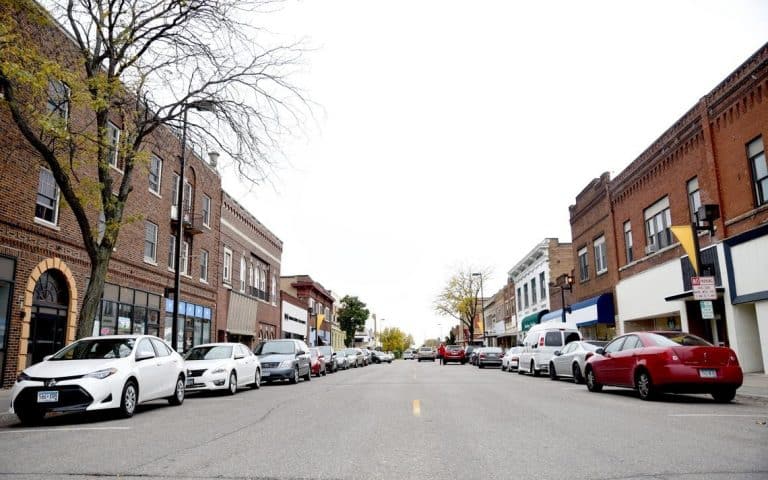WILLMAR—While it is not exactly the dark ages in downtown Willmar, home to many successful businesses and low vacancy rates, there is also plenty of opportunity for development, whether it is upgrading an older building or constructing a project from the ground up. The area is already part of Willmar’s only Opportunity Zone, which provides capital gains tax breaks for those who invest in eligible projects.
In an effort to bring even more development to the area and open it up to a larger pool of investors and developers, the Willmar Planning and Development Department has been working for several weeks to create a Renaissance Zone in downtown, with several incentives for potential developers.
“The idea is to make this area as enticing to development as we possibly can make it,” said David Ramstad, Planning and Development director.
Ramstad presented the draft proposal for the Renaissance Zone at Monday’s meeting of the Willmar City Council’s Community Development Committee. Ramstad was looking for, and received, committee approval to begin discussing the idea with stakeholders throughout the city, to get their thoughts on the program.
“All of this stuff is very fluid right now,” Ramstad said. “It is hot off the press.”
The proposed Renaissance Zone would overlay the federal Opportunity Zone, which includes downtown Willmar as well as a swath along U.S. Highway 12 and the residential area east of First Street and south of Highway 12. The Renaissance Zone would also include a portion between Seventh Street and 11th Street Southwest and from Pacific Avenue to Becker Avenue Southwest. This area encompasses the location of Willmar Municipal Utilities and the soon-to-be-closed power plant.
The program, if approved, would initially be a five-year pilot.
The incentives being considered include tax abatement for projects in the zone, free building permits, nearly free city-owned land, a loan program for facade renovation and more open zoning in the Renaissance Zone. Each of the incentives carry its own eligibility requirements, with some more strict than others. If eligible, one project in theory could take advantage of all of the incentives.
“All together they add up to a significant amount,” Ramstad said.
The Renaissance Zone development program got its start in North Dakota and later was adopted in Moorhead, where Ramstad said it has had very good success, more so than the Opportunity Zone, which is usually more attractive to wealthier investors. The Renaissance Zone provides more opportunities for a wider cross-section of interested parties.
“What this does, it opens it up to local, state and national developers. So everyone in Willmar can participate in these development opportunities,” Ramstad said.
The Renaissance Zone would focus on commercial and multi-family housing projects, both new construction and reuse of current buildings. The goal of the zone is to turn downtown Willmar into a urban living and entertainment district, with 1,000 housing units in the next 15 years. It would work with, instead of compete against, the First Street South retail corridor.
“We would like to reimagine downtown,” Ramstad said.
When it comes to what downtown could look like, there is support for both preserving its historic charm, while also opening it up to more creative projects.
“Really encouraging the creativity of developers,” said Sarah Swedburg, city planner.
There has been discussion about creating a voluntary heritage preservation designation, which could help save some of downtown Willmar’s historic buildings. The building owner would have to give their permission for a building to be listed.
One of the first buildings to be designated a heritage site would be the Willmar Municipal Utilities Power Plant. The tentative designation would be for two years, as Willmar Municipal Utilities begins two phases of environmental assessments and a cost-benefit analysis of the structure, to discover whether it makes sense to preserve the building for another use. Any such project will be very expensive and Willmar Municipal Utilities will need to retain a portion of the property for its own uses.
“There needs to be a number of studies done on the property,” Ramstad said. “To determine whether the Utilities Commission and the City Council have the appetite to go for it, because it is probably going to be millions of dollars to make it turnkey.”
There is still a lot of work that needs to be completed before any Renaissance Zone program is approved and ready for use. Ramstad and his staff will be speaking with people inside and outside of City Hall about the proposed incentives.
Ramstad expects to be back in front of the committee in four to six weeks with more firmed up proposals.
The City Council will eventually have to approve any of the development incentives. Ramstad hopes to have the program in place by late February or early March.
Even in its earliest stages, the Renaissance Zone idea is already being spoken about amongst potential developers and investors. Kandiyohi County and City of Willmar Economic Development Director Aaron Backman said what Ramstad and Swedburg have put together makes sense and some of the incentives could make it possible for projects to become a reality.
“It is attractive, it is getting people’s attention,” Backman said.
West Central Tribune by Shelby Lindrud

